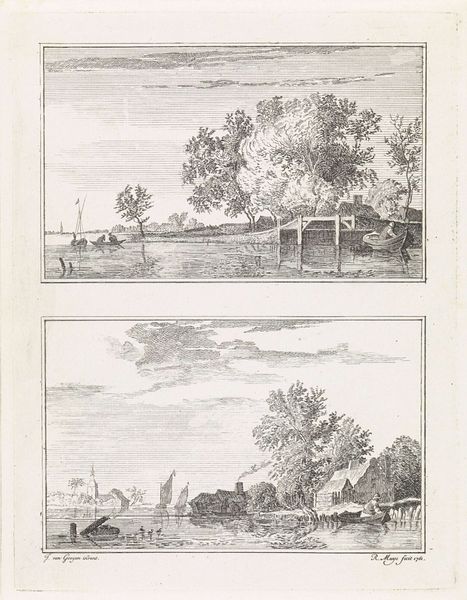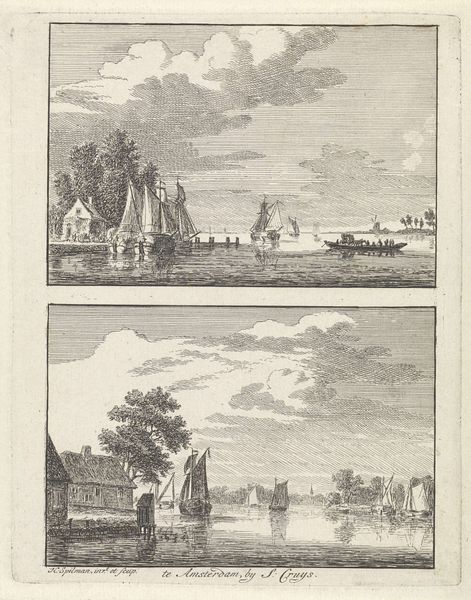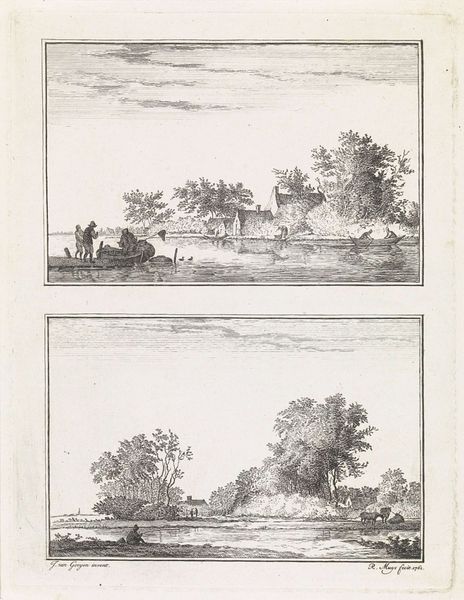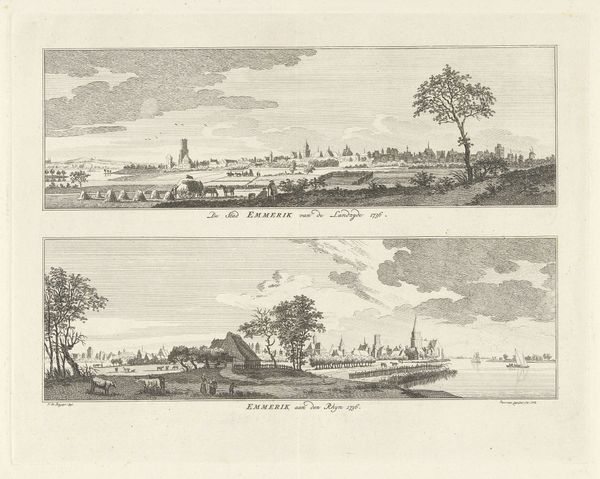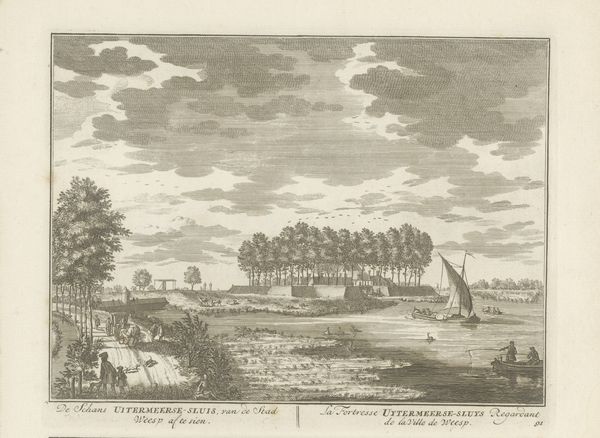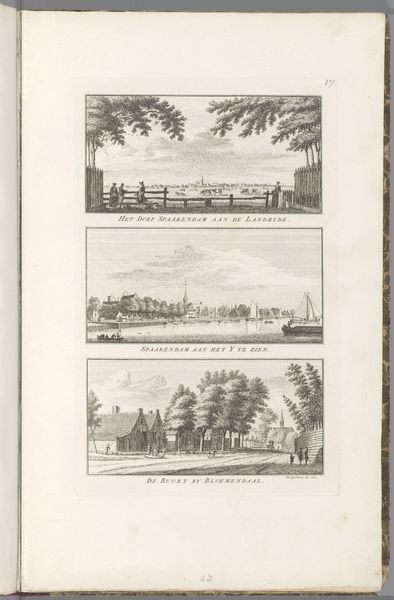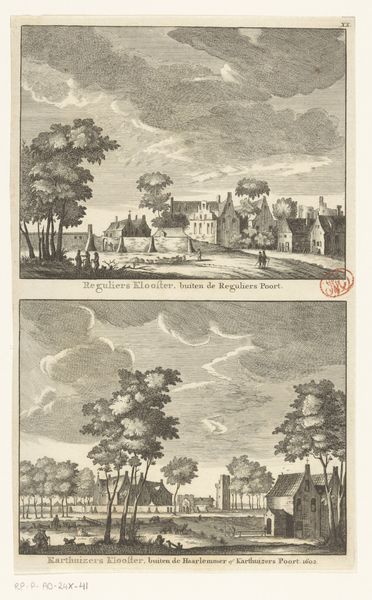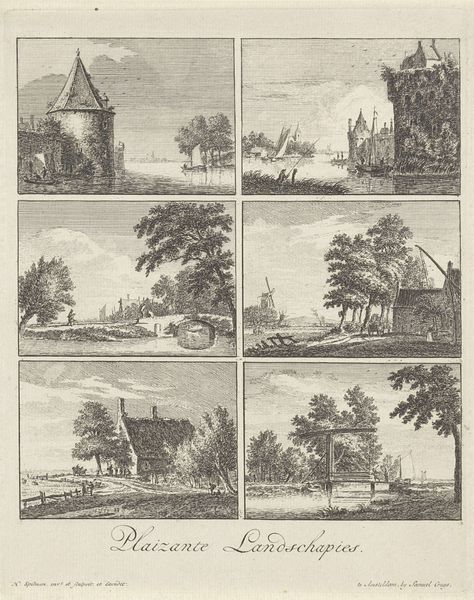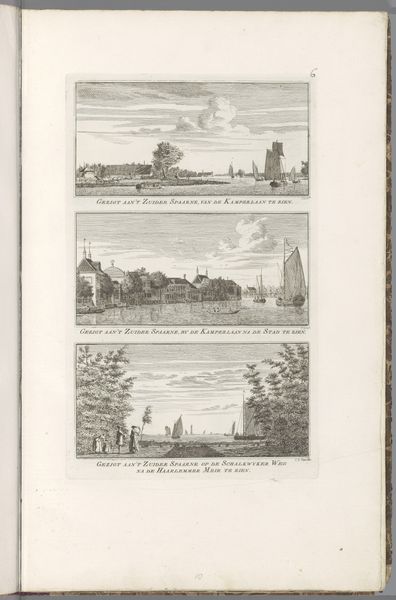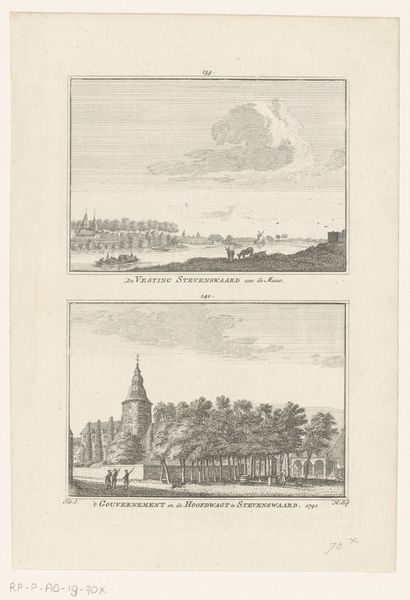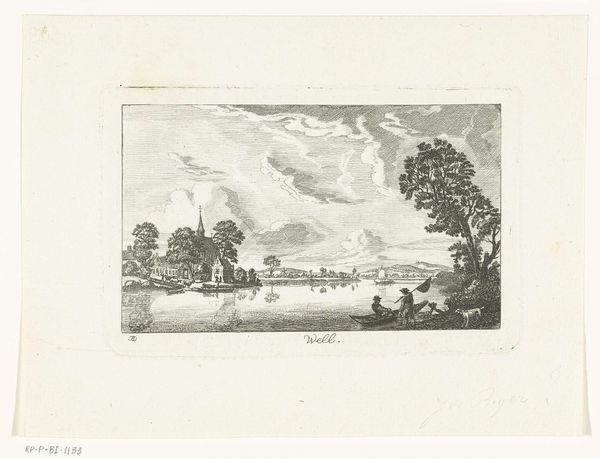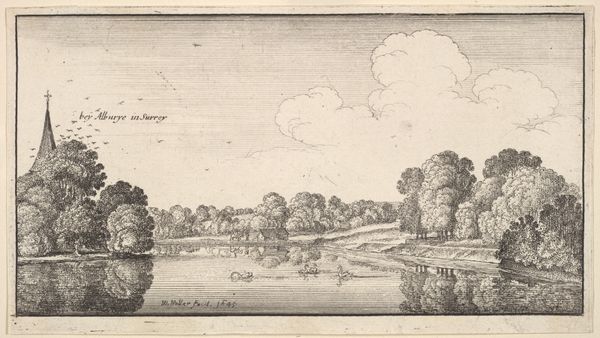
print, etching, engraving
#
dutch-golden-age
# print
#
etching
#
old engraving style
#
landscape
#
cityscape
#
northern-renaissance
#
engraving
Dimensions: height 204 mm, width 147 mm
Copyright: Rijks Museum: Open Domain
This etching by Paulus van Liender presents two views of Kalkar, capturing rural life outside the city and the cityscape from Monterberg. Dominating the upper scene, the windmill stands as a symbol of Dutch ingenuity and prosperity, set against a vast sky filled with billowing clouds. The windmill motif, a common sight in Dutch landscapes, carries a deeper resonance. It evokes a sense of industry but also vulnerability. We see it appear time and again in paintings across Europe, each time bearing witness to human endeavor. Think of Don Quixote tilting at windmills, or even its presence in Romantic-era paintings, dwarfed by sublime and untameable natural forces. The image of the working landscape, though seemingly static, engages the viewer. The cyclical nature of agriculture is a recurring theme, echoing the subconscious rhythm of life, death, and rebirth, a cultural memory passed down through generations.
Comments
No comments
Be the first to comment and join the conversation on the ultimate creative platform.
